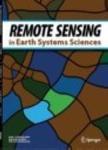版权所有:内蒙古大学图书馆 技术提供:维普资讯• 智图
内蒙古自治区呼和浩特市赛罕区大学西街235号 邮编: 010021

作者机构:Department of Electrical and Electronics Engineering Vishnu Institute of Technology Bhimavaram India Department of Computer Science M.G.R. College Hosur India Department of Networking and Communications School of Computing SRM Institute of Science and Technology Chennai Kattakalathur India Department of ECE Chennai Institute of Tech Chennai India Department of Electronics and Communication Engineering Kallam Haranadhareddy Institute of Technology (Autonomous) Guntur Chowdavaram India Department of Information Technology Vel Tech Multi Tech Dr.Rangarajan Dr.Sakunthala Engineering College Chennai-62 Avadi India
出 版 物:《Remote Sensing in Earth Systems Sciences》 (Remote Sens. Earth Sys. Sci.)
年 卷 期:2025年第8卷第2期
页 面:496-509页
主 题:Climate change Cryosphere Ice thickness ICESat LSTM-RNN Machine learning Oceanographic changes Predictive modeling Remote sensing Sea ice extent
摘 要:Climate change has accelerated the dynamics of cryospheric and oceanographic systems, leading to rising sea levels, increased ice melt, and significant shifts in polar regions. Monitoring these changes is crucial, yet traditional observational methods are often impractical in remote, harsh environments. This study presents a novel approach to monitoring oceanographic and cryospheric changes induced by climate dynamics, using a cascaded long short-term memory (LSTM) and recurrent neural network (RNN) model with ICESat and supplementary remote sensing data. The model leverages ICESat’s high-resolution laser altimetry for precise measurements of ice thickness and ice sheet elevation, combined with data from MODIS, Sentinel-1, and CryoSat-2 for comprehensive insights. Our results indicate that the cascaded LSTM-RNN model achieves high predictive accuracy, with root mean square error (RMSE) values as low as 0.08 m for ice thickness and a mean absolute error (MAE) of 0.05 m. Additionally, it attains a correlation coefficient of 0.96, significantly outperforming other models like standalone LSTM (RMSE 0.12 m, MAE 0.09 m) and CNN-LSTM hybrid (RMSE 0.10 m, MAE 0.08 m). This model captures both seasonal and long-term trends in ice dynamics, highlighting its utility for robust climate monitoring. The successful integration of ICESat and other remote sensing data demonstrates the potential for advanced machine learning techniques to enhance predictions of polar and oceanographic changes, supporting climate adaptation efforts. © The Author(s), under exclusive licence to Springer Nature Switzerland AG 2025.